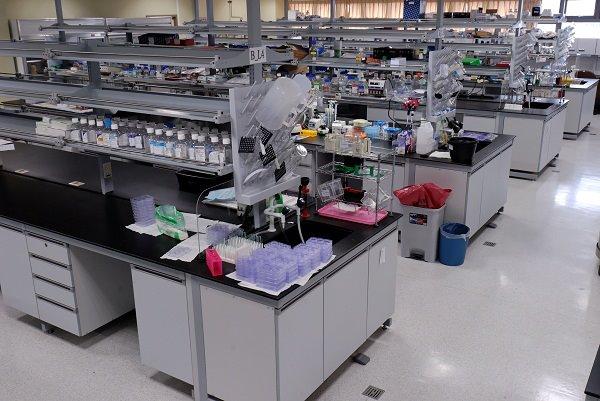A team of University of Wisconsin biomedical engineers recently received a five-year grant to conduct research into the progression of ovarian cancer.
The specialized group of six professors range from the Department of Pathology and Laboratory Medicine to the Department of Obstetrics and Gynecology.
According to a UW press release, the team will rely on advanced laboratory technology and imaging in hopes of revealing the most comprehensive analysis yet of the extracellular matrix in ovarian cancer.
The extracellular matrix consists of molecules secreted by cells that create structures, sometimes unhealthy ones. When the tissues turn cancerous, this extracellular matrix — which guides cell behavior, changes and secretion — also contributes to the development of cancer, according to the press release.
UW cancer facility first in Wisconsin to implement newly approved radioactive drug treatment
Using the $2.2 million grant from the National Institutes of Health through the National Cancer Institute’s Cancer Tissue Engineering Collaborative Research Program, the team will explore the specific extracellular matrix alterations that cause ovarian to progress. Vilas Distinguished Professor Kristyn Masters said the research is focused on improving early treatment.
“Ovarian cancer has a fairly high mortality rate, and so what we’re trying to investigate is how these tumors metastasize, and if we can better understand how they metastasize […] maybe we can better treat it earlier,” Masters said.
According to the American Cancer Society, while a woman’s risk of getting ovarian cancer is only 1 in 78 throughout her lifetime, it ranks fifth in cancer deaths among women and causes more deaths than any other female reproductive system cancer. Through this research, department of medical physics professor Paul Campagnola and his colleagues hope to develop a deeper understanding of the disease, which will then lead to improved diagnosis further down the road.
Campagnola referred to the team’s research approach as “rather novel” because of the technological methodology they will utilize.
“This was really a way of merging a lot of expertise both on the imaging side […] and the digital engineering side,” Campagnola said.
Across all team members, the experts are able to bring several different areas of expertise to the table, Masters said. This includes cell signaling, manipulation of tumor microenvironment, use of varied engineering tools and multi-system fabrication to obtain complex models of tumor environment.
Through collaborative efforts, the experts will be able to essentially mimic the body’s internal topographical and mechanical composition surrounding cancer cells, Masters said.
“It is somewhat transformative to purposefully make diseases in the lab,” Masters said. “Now we’re really using it as a tool to investigate processes […] It’s a combination of all fairly new techniques to get a much more complex rendition of what you would find in the body.”
According to a statement associate professor of cell and regenerative biology Pam Kreeger made in the press release, the current best way to predict outcome in ovarian cancer is to see how much of the disease is removed after a first surgery. However, understanding the environment surrounding tumors — which is what this research aims to accomplish — could potentially lead to a more positive outcome for patients.
UW researchers aim to understand why some cells turn cancerous
This research will very much be a team effort, Masters said, since the collaboration involves the several different experts in addition to UW undergraduate and graduate students, as well as post-doctoral and Ph.D. students.
Campagnola said although the grant is for five years, he believes this will be a much more long-term process requiring the continued application for grants.
Beyond ovarian cancer research, Masters said the methodology and technology being used by UW could also have several other avenues, including using in vitro models to make more personalized medicine or test why certain patients respond differently to drugs than others.
As for right now, Campagnola looks forward to progressive outcomes from the current project at hand.
“The long term goal is to really have a better understanding,” Campagnola said. “If we have a better understanding of the disease, then we’ll have better tools for diagnosis.”


















